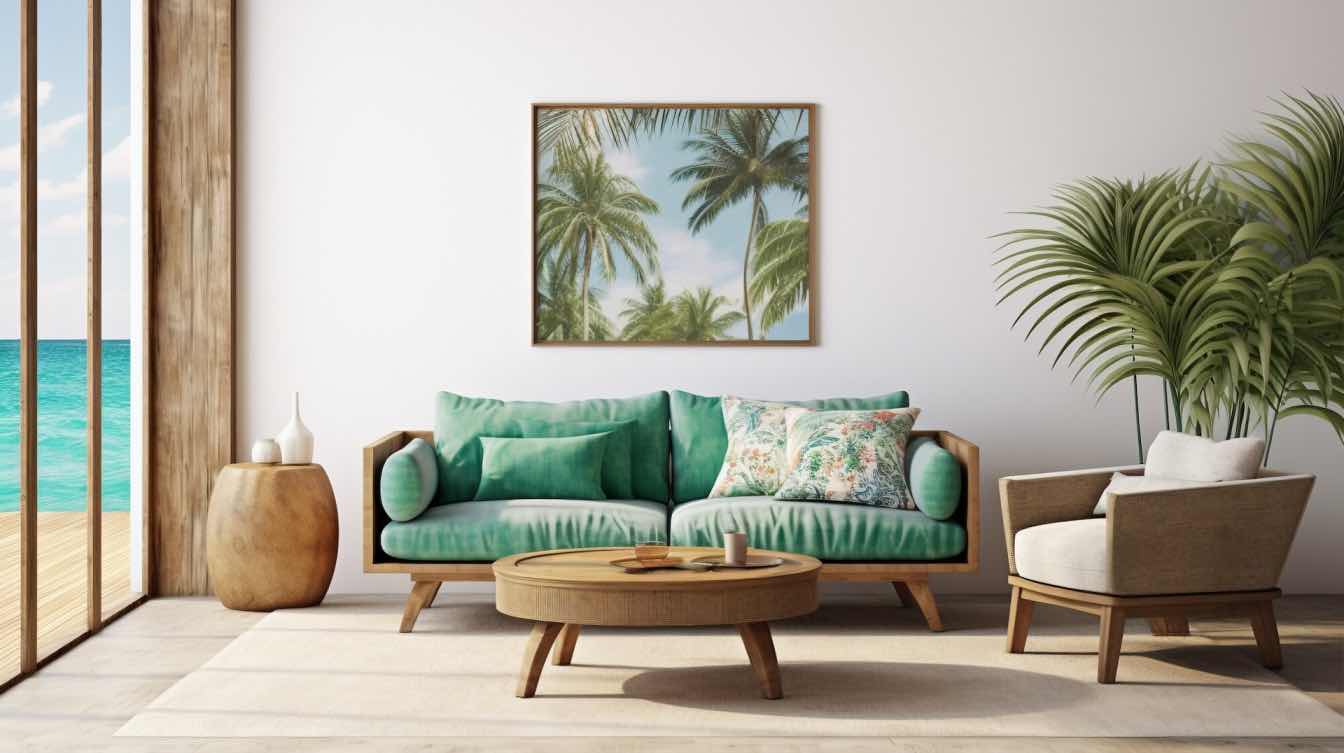The art of layering textures isn't just a trend, it's a timeless technique that can significantly enhance your home's aesthetic. With the right blend of textures, you can transform your living space into a cozy haven that reflects your personality and style.
From plush rugs and sleek metals to rustic woods, each texture contributes to the overall ambiance of your home. Join us as we explore the secrets behind this transformative design technique. Discover how you can infuse your home with depth, warmth, and visual interest through the art of layering textures. Let's create a space that's not just visually appealing, but also a true reflection of you.
The Art of Layering Textures Defined
Unlocking the true potential of interior design lies in grasping the art of layering textures. It's an approach that reveals a novel dimension in a home's aesthetic.
The Importance of Texture in Interior Design
Texture in interior design plays an essential role—akin to that of color. It grants character, coherence, and depth to a room, crafting a multi-dimensional experience. For instance, consider two visual scenarios: a room decorated in smooth, all-glossy finishes versus one embellished with a fusion of velvet upholstery, rough rustic wood, and soft woolen throws. The latter emits richness, comfort, and complexity—a sanctuary brought to life.
Understanding Texture Layers
Gaining a solid understanding of texture layers proves crucial in the realm of interior design. If you visit Decorator Advice, you’ll see that it's all about recognizing the balance that marries unity and variety, creating a rich, sensory experience. A well-layered room has an array of textures: smooth boasts a gloss finish, tactile elicits an urge to touch, and the visual either stands out or recedes into the background. It's not necessary that everything should mingle seamlessly; it's about creating harmony that sparks interest. For example, offsetting a sleek, polished coffee table with a shaggy rug offers visual and tactile contrast, presenting an inviting, aesthetically compelling space.
Benefits of Layering Textures in Your Home
Embracing the art of layering textures, one garners multiple benefits that include sparking visual interest and adding depth and dimension to a living space. Layered textures bring a unique aesthetic which can be both pleasing and functional.
Creating Visual Interest
Through the layering of textures, homeowners create a distinctive character with dynamic visual interest in their living spaces. Rather than presenting a monotonous look, the interplay of textures, as in a soft velvet couch resting on a rugged sisal rug, keeps the eye moving and engaged. The strategic placement of diverse textures, such as a fuzzy faux fur throw over a smooth leather armchair, attract attention and keep a room from appearing bland or un-vary.
Adding Depth and Dimension
Not only does layering textures add visual interest, but it also injects depth and dimension into a space. This process goes the extra mile, turning generic living spaces into ones that evoke a rich, three-dimensional vibe. A room layered with textures, from a knotted wool area rug to a hammered metal coffee table, provides a sense of depth that makes the area feel more dynamic and spacious. Dimension can also be given to a space using a variety of textures. For example, a slick marble countertop juxtaposed with a weathered wooden table creates a perceived sense of depth by emphasizing the difference in surfaces. Such practice enlivens home spaces, painting more than just a visual picture — it crafts a tangible, tactile environment that invites exploration and engagement.
How to Successfully Layer Textures for Aesthetic Enhancement
Successfully layering textures in a home's decor requires a thorough understanding of base texture identification, the decision-making process for opting complementary textures, and the act of balancing these textures.
Identifying Your Base Texture
The base texture serves as the anchor of any room's design, setting the fundamental tone and appeal. Usually, it's a neutral or muted texture that can gracefully accept a variety of layered textures without becoming overwhelmed or visually confusing. Examples include smooth wooden flooring or minimalist wall paint in shades of white, beige, or gray. Identifying the base texture acts as the first step in building a successful layering of textures. Its purpose is to create a comfortable, harmonious base on which the layers of various textures can make their impact.
Choosing Complementary Textures
Layering is not about randomly adding different textures. It's about creating a cohesive, visually pleasing aesthetic. Complementary textures don’t imply identical or even akin; instead, they're textures that work well together to enhance the visual richness of the space. For instance, the cool sleekness of metal juxtaposed against the warm plushness of a faux fur rug creates compelling visual tension. Similarly, a soft velvet couch paired with a rough, sisal area rug introduces exciting variety without clashing.
Balancing Out Your Textures
The balancing act involves discerning control over how many different textures are introduced into the space. Too many, and the area might seem cluttered and chaotic, too few, and the space could risk seeming dull. It would be beneficial to focus on the rule of three - include at least three different textures in any design space. This rule encourages diversity in texture choices, while still maintaining a sense of controlled variety. For instance, a wooden floor (base texture), a leather couch (add-on texture), and a faux fur throw (layered texture) add individuality to a room while keeping balance in check.
Mistakes to Avoid in Layering Textures
Embarking on the journey to master the art of texture layering involves its fair share of hurdles, too. It's essential to sidestep certain pitfalls to ensure success in crafting a visually pleasing aesthetic in your home.
Overwhelming Your Space
One common mistake lies in the tendency to overwhelm your space. Adding varying textures, it may seem alluring to incorporate as many different materials and finishes as possible. But overload, it risks creating a chaotic and cluttered environment. For example, a living room filled with shag rugs, metal art pieces, faux fur throws, and velvet sofas may encompass exciting textures but fail to deliver a cohesive look. A more balanced approach, it allows each texture to shine individually, fostering a more harmonious atmosphere.
Neglecting Color and Pattern Coordination
Disregarding the importance of color and pattern coordination represents another common blunder. Textures aren't just about the material; color and patterns play a critical role in how textures interact. For instance, a fine silk curtain in a bold red hue might clash with a beige, rustic jute rug, despite their contrasting textures. Coordinating color schemes and patterns, it aids in the assimilation of distinct textures, establishing a unified visual narrative within your space.
Layering textures isn't just a design trend, it's an art form that can truly elevate your home's aesthetic. It's all about balance and harmony, using the rule of three to ensure diversity without clutter.





